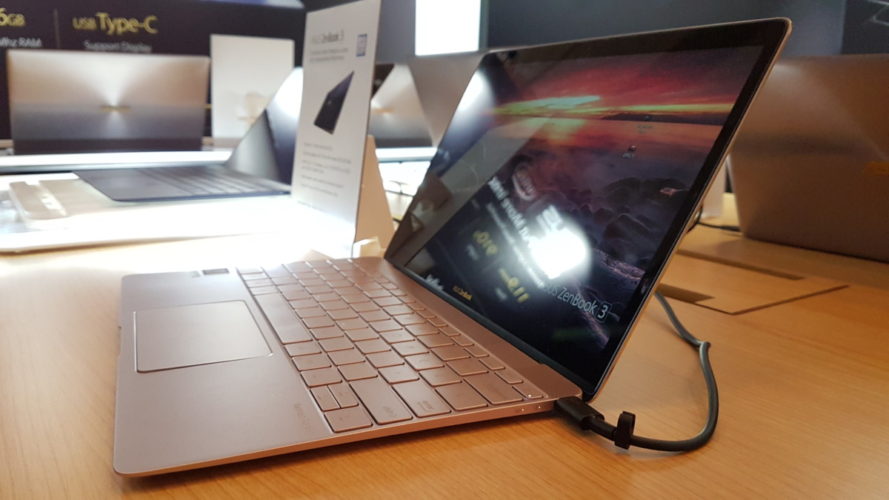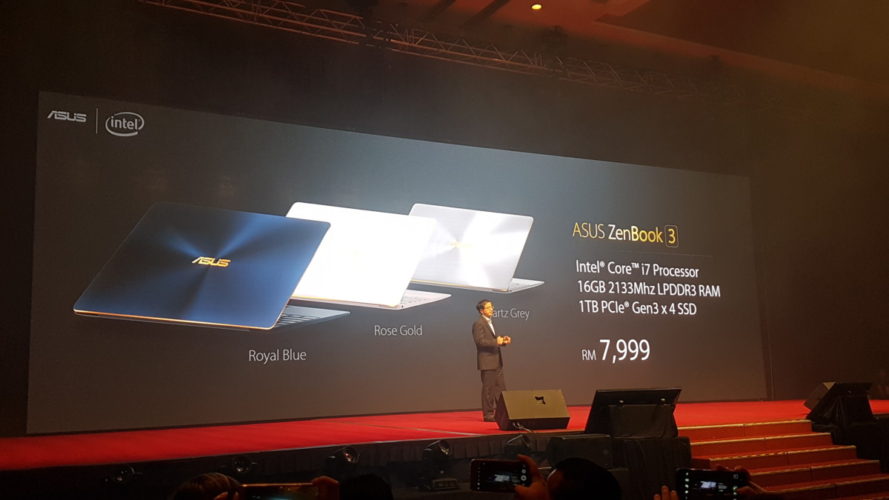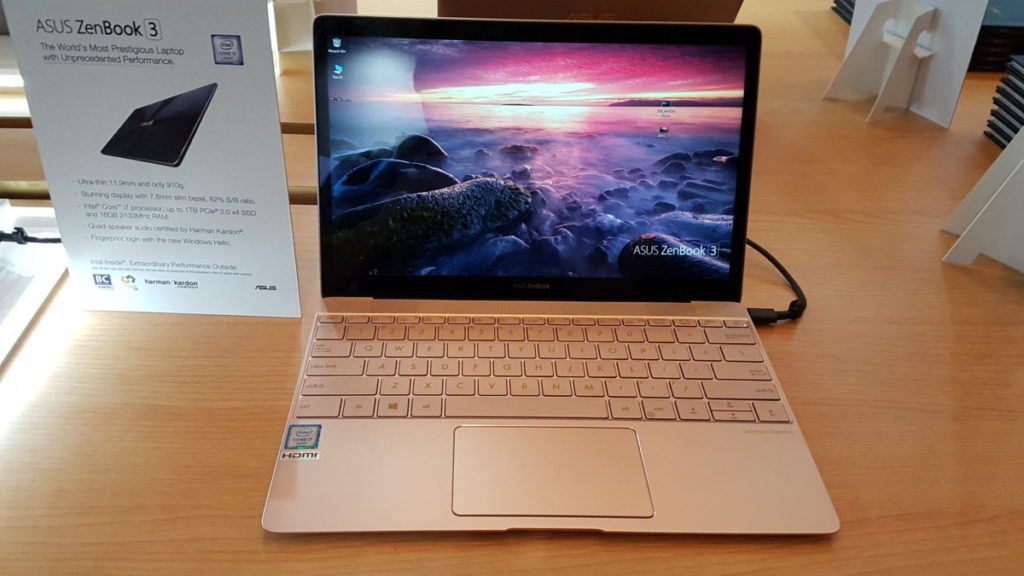
A hands-on with the amazingly slim Asus ZenBook 3
If we’re to extrapolate anything from the ZenBook 3, the boffins in the back room up at Asus HQ have built this ultraportable squarely as a Macbook killer and it has the looks and the hardware to square off toe-to-toe with its nemesis and come out on top. The ZenBook 3 is crafted from aerospace grade aluminium for lightness and durability, with Asus’ characteristic concentric ‘circle’ metal finish embossed on the cover with three different paint jobs to choose from – Royal Blue, Rose Gold and Quartz Grey.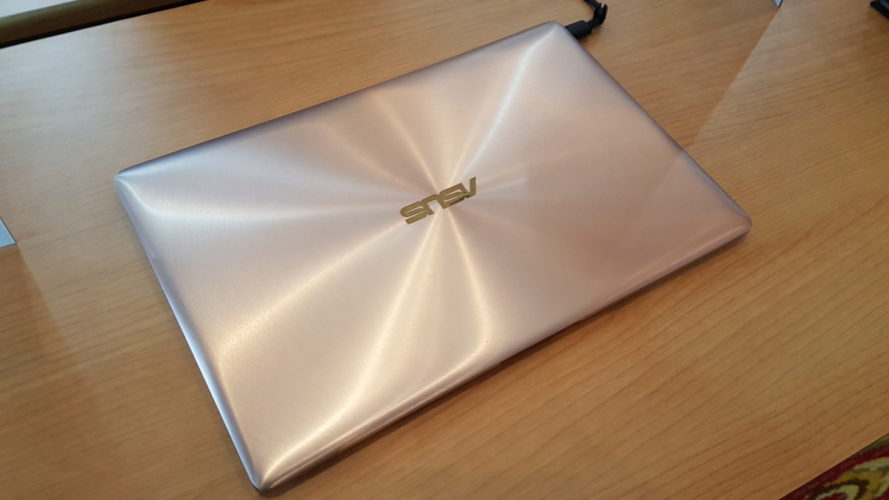
The ZenBook 3 is amazingly light as notebooks go – a mere 910g. Compared to the 13.3-inch Macbook Air and even the new Macbook, it’s both slimmer and lighter, measuring in at 11.9mm at its thickest point and 3.5mm at its thinnest. The MacBook Air is a portly 17mm and weighs 1.3kg while the new MacBook is 13.1mm thick and is 10g heavier than the ZenBook 3.
One of the ways Asus has shaved on weight is under the hood is a custom designed cooling setup that integrates a cooling fan that’s just 3mm thin. Even so, they’ve still managed to cram in space for a quad-speaker setup from Harman Kardon that packs two speakers at the upper corners of the keyboard island and at the base of the keyboard facing the user. The hinges on the ZenBook 3 are also incredibly slim, measuring in at 3mm thin; belying their size, they’re built tough and have been rated to last at least 20,000 open/close actions before giving up the ghost; a figure vastly more than anyone would ever open or close their notebook.
While it’s barely the size of a sheet of A4 paper, the ZenBook 3 hasn’t skimped on the display and they’ve maximised the 12.5-inch Full HD display so that it takes up 82% of the real estate on the display by slimming down the bezels to an impressive 7.6mm.
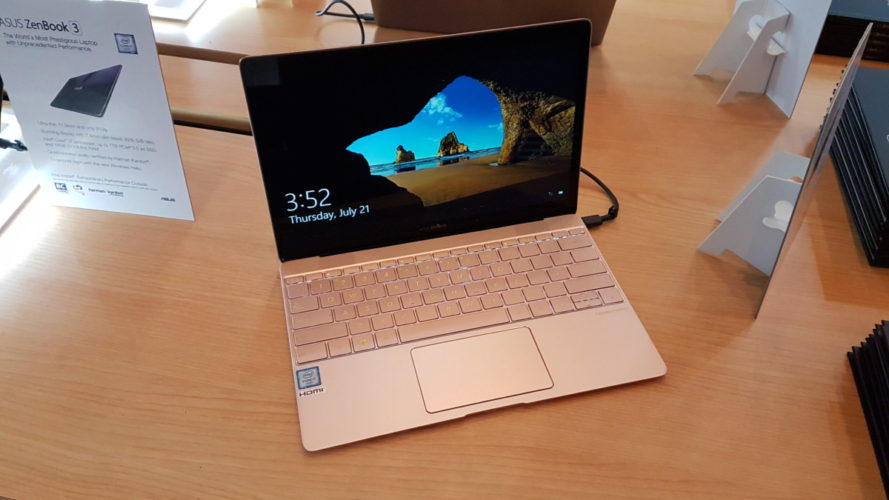
The full-sized keyboard stretches across most of the width of the ZenBook with 19.8mm key pitch akin full sized desktop keyboards and the keys are backlit to boot. A fingerprint reader is inset into a corner of the large touchpad that allows users to unlock the ZenBook with a single finger.
The hardware for the local variant is an Intel Core i7 processor, 16GB of DDR3 RAM, integrated graphics and up to a 1TB PciE Gen3 4xSSD. A built-in battery offers nine hours of usage and supports fast charge tech to bring it up to 60% capacity in just 49 minutes from dead zero. Charging duties are via a USB Type-C port. Barring that, the notebook is too slim to have other ports save for a 3.5mm audio jack. If you still need additional ports, you can get an optional Asus-issued Universal dock that augments the lone USB Type C port with a card reader, LAN, VGA, HDMI, USB 3.0 and another USB Type-C port.
Holding the ZenBook 3 is a surreal experience, seeing how light it is and the build quality feels exceptionally sturdy without any flex or play in either the keyboard or the monitor. The hinges hold the whole affair up well with almost no wobbling of the display even when held one handed and opened and closed smoothly. This is a class act folks.
The touchpad feels lustrously smooth and an exploratory poking about around the keyboard revealed a very pleasant typing experience that almost inspires words to flow on their own; this should be quite a joy to use for crafting out long, epic prose. If George R.R Martin had something like this, he’d likely churn out his next book faster.
Due to how slim it is, the ZenBook 3 is reliant on its sole USB Type-C port for charging and docking duties. This lack of ports looks like something of concern but it’s not an insurmountable complication nor a major one seeing as everyone keeps things in the cloud these days. If you need to, you can still snag the Asus dock to access flash drives or other kit though pricing hasn’t been revealed yet for the aforementioned dock. While it’s a little dear at RM7,999, this is hands-down Asus’ sexiest notebook to date and something that’ll likely turn heads when you whip it out at Starbucks. We’ll fill you in once we get our hands on a review unit.


